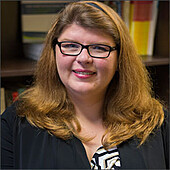This webinar is part of a series organized by CHE and the Boston University Superfund Research Program (BUSRP). Learn more about the CHE-BUSRP Partnership.
When superstorms, fires, floods, and other disasters hit communities, how can we prevent exposures to toxic chemicals in water, air, food, and homes? How can community climate change mitigation plans anticipate potential risks during weather-related crises so that systems are in place to help community leaders provide guidance and residents can protect themselves? During this webinar panelists described the range of toxic exposures and mixtures of chemicals that may be encountered during climate disasters from water, air, and industrial sources. They discussed community prevention plans and policies that can help protect human and environmental health when the next disaster strikes. Participants learned how to prepare and protect their communities and families when the next superstorm or climate disaster strikes their home or town.
Featured Speakers
 Anna Goodman Hoover, PhD, MA, is Assistant Professor in the Department of Preventive Medicine and Environmental Health at the University of Kentucky. Dr. Hoover teaches undergraduate courses in public health preparedness. A communication scientist with research expertise in health and risk communication, Dr. Hoover is co-principal investigator and co-director of the National Coordinating Center for Systems for Action, a program of the Robert Wood Johnson Foundation (RWJF) that aims to discover and apply new evidence about ways of aligning the delivery and financing systems that support a Culture of Health. Dr. Hoover also is co-principal investigator and deputy director of the RWJF-funded National Health Security Preparedness Index program management office, which oversees annual production of the Index – an important tool for better understanding U.S. and state-level preparedness to address large-scale public health threats. In addition, she serves as co-Core Leader of the UK Superfund Research Center’s Research Translation Core, where she works with stakeholder groups to improve mutual understandings of environmental health issues, translating research outcomes at community, policy, and provider levels. Dr. Hoover is a founding member of UK's Dissemination and Implementation Sciences Consortium. Her research focuses on using stakeholder-centered communication, public engagement, and evidence-based dissemination to improve population health.
Anna Goodman Hoover, PhD, MA, is Assistant Professor in the Department of Preventive Medicine and Environmental Health at the University of Kentucky. Dr. Hoover teaches undergraduate courses in public health preparedness. A communication scientist with research expertise in health and risk communication, Dr. Hoover is co-principal investigator and co-director of the National Coordinating Center for Systems for Action, a program of the Robert Wood Johnson Foundation (RWJF) that aims to discover and apply new evidence about ways of aligning the delivery and financing systems that support a Culture of Health. Dr. Hoover also is co-principal investigator and deputy director of the RWJF-funded National Health Security Preparedness Index program management office, which oversees annual production of the Index – an important tool for better understanding U.S. and state-level preparedness to address large-scale public health threats. In addition, she serves as co-Core Leader of the UK Superfund Research Center’s Research Translation Core, where she works with stakeholder groups to improve mutual understandings of environmental health issues, translating research outcomes at community, policy, and provider levels. Dr. Hoover is a founding member of UK's Dissemination and Implementation Sciences Consortium. Her research focuses on using stakeholder-centered communication, public engagement, and evidence-based dissemination to improve population health.
 Tiffany Skogstrom, MPH, is Outreach and Chemical Policy Analyst for the Building Chemical Safety Into Climate Change Resiliency Project at the Massachusetts Office of Technical Assistance. The project goal is to incorporate chemical safety into climate change and emergency preparedness to reduce risks of severe weather related industrial accidents. OTA’s map of Massachusetts toxics users and climate change vulnerable areas can be found here. Ms. Skogstrom raises the agency’s visibility as a free and confidential resource for Massachusetts’ toxics users and coordinates OTA’s chemical policy development and research. Her toxics use reduction and occupational health experience includes creating a program to improve the work environment for auto shop and nail salon workers through the Boston Public Health Commission’s Safe Shops and Safe Nail Salon Projects. Throughout her career, Tiffany has worked with various environmental and nonprofit organizations on waste reduction, recycling, and pollution prevention campaigns. Tiffany graduated from the Boston University School of Public Health where she concentrated in Environmental Health and was awarded the William B. Patterson Memorial Award for Excellence in Environmental and Occupational Health. She is also a 2006 Environmental Leadership Program Fellow and 2011 Fellow of the University of California San Francisco Program on Reproductive Health and the Environment’s Reach the Decision Makers Program.
Tiffany Skogstrom, MPH, is Outreach and Chemical Policy Analyst for the Building Chemical Safety Into Climate Change Resiliency Project at the Massachusetts Office of Technical Assistance. The project goal is to incorporate chemical safety into climate change and emergency preparedness to reduce risks of severe weather related industrial accidents. OTA’s map of Massachusetts toxics users and climate change vulnerable areas can be found here. Ms. Skogstrom raises the agency’s visibility as a free and confidential resource for Massachusetts’ toxics users and coordinates OTA’s chemical policy development and research. Her toxics use reduction and occupational health experience includes creating a program to improve the work environment for auto shop and nail salon workers through the Boston Public Health Commission’s Safe Shops and Safe Nail Salon Projects. Throughout her career, Tiffany has worked with various environmental and nonprofit organizations on waste reduction, recycling, and pollution prevention campaigns. Tiffany graduated from the Boston University School of Public Health where she concentrated in Environmental Health and was awarded the William B. Patterson Memorial Award for Excellence in Environmental and Occupational Health. She is also a 2006 Environmental Leadership Program Fellow and 2011 Fellow of the University of California San Francisco Program on Reproductive Health and the Environment’s Reach the Decision Makers Program.
This webinar was moderated by Dr. Wendy Heiger-Bernays, Clinical Professor of Environmental Health at the Boston University School of Public Health.
This webinar lasted for 60 minutes and was recorded for our call and webinar archive.
